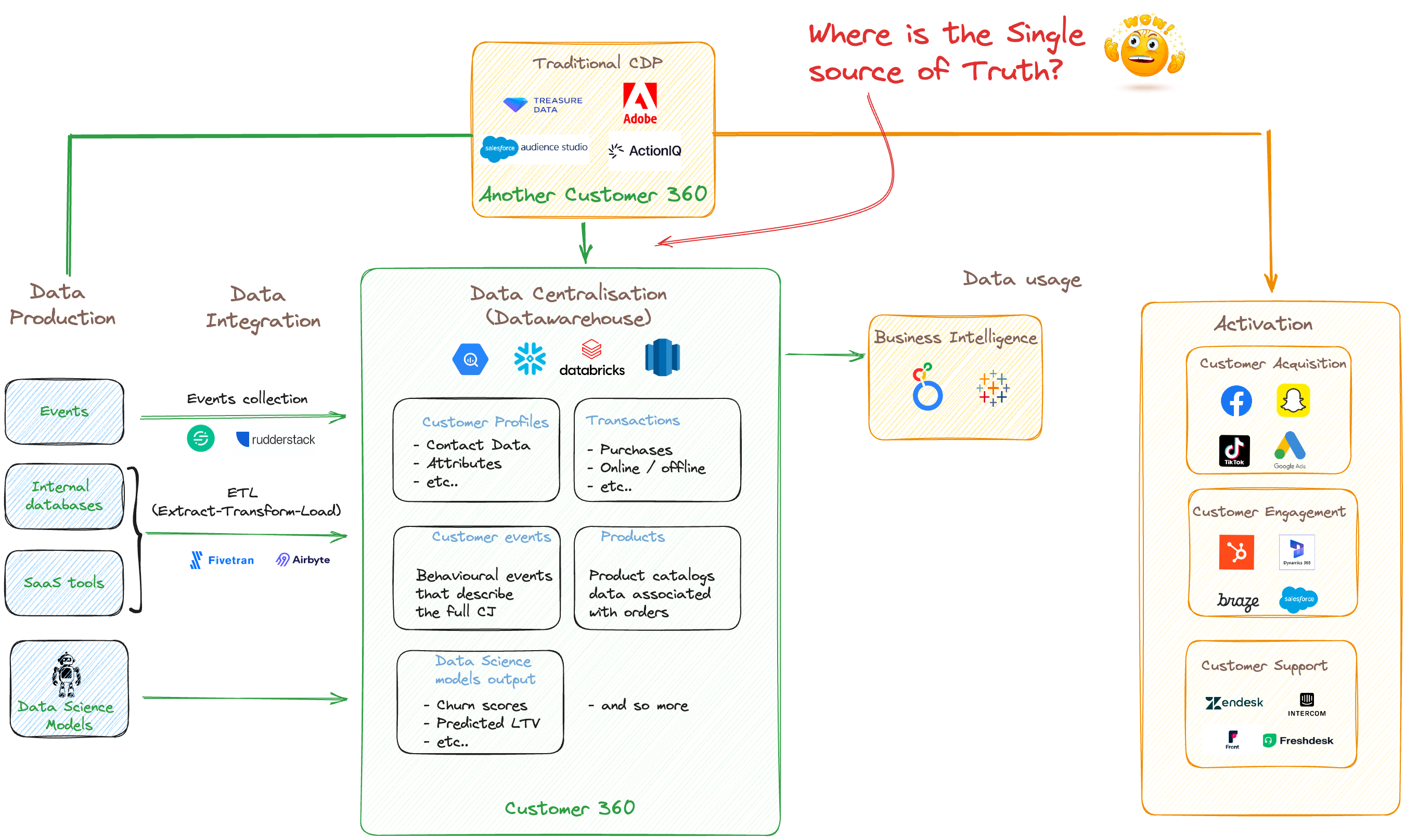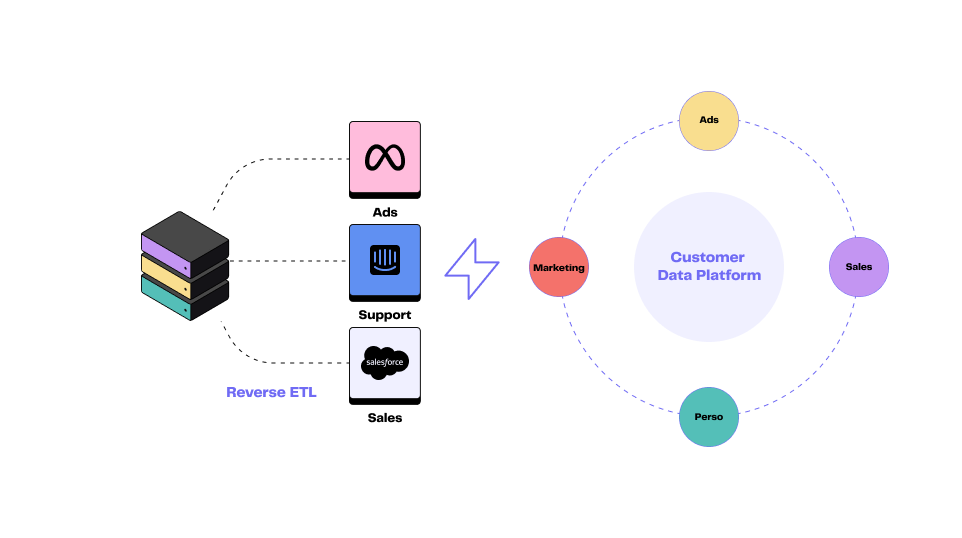In a world where customer data has become king to offer a personalized and omnichannel experience, it is essential for companies to have the right tools to collect, manage, and analyze it effectively.
On one hand, we have Customer Data Platforms (CDP), long regarded as an essential tool for the organization and management of customer data. On the other hand, we have Reverse ETL, relatively recent tools that enable the activation of data from any data source to any destination.
These tools offer unique and complementary functionalities, but it is crucial to understand the differences between the two and choose the one that best suits your specific needs.
👉🏼 In this article, we will explore in detail the characteristics of CDP and Reverse ETL tools, as well as the criteria to consider when choosing the right tool for your business.
Definitions of Reverse ETL and CDP
What is a Reverse ETL?
The Reverse ETL process corresponds to transferring data from a source (usually a data warehouse) to business platforms and applications used by marketing, sales, support, or operations teams. This allows companies to have a real-time view and immediate access in their business tools to data from various sources. Seamlessly integrating into a company's existing data stack, it automates the data synchronization process, eliminates tedious manual tasks, and ensures data consistency and accuracy at all times.
Reverse ETLs allow the use of customer data in the company's daily operations, whether for marketing campaigns, sales operations, support activities, or finance. Reverse ETL is essential for enabling business teams to make data-driven decisions and act on a daily basis.
What is a CDP?
A CDP is a software platform designed to collect, manage, and unify customer data from various sources, such as online interactions, purchases, demographic data, etc. CDPs enable companies to create complete and unified customer profiles, thus offering a 360-degree view of each customer.
CDPs are generally used to personalize customer interactions, enhance engagement, optimize marketing campaigns, and improve the overall customer experience. They are often integrated with other marketing tools such as CRMs, marketing automation tools, and advertising platforms to provide a consistent and personalized customer experience across all channels.

CDP vs. Reverse ETL
Comparison of Tools
Reverse ETL and CDP have distinct features that meet different needs in managing customer data. While Reverse ETL focuses on synchronizing data from various sources to a final destination, CDP focuses on collecting, unifying, and activating customer data to enhance the customer experience.
💡 Reverse ETL is more focused on the technical operations of data transfer, while CDP is more geared towards marketing strategies and optimizing the customer experience.
Criteria | Reverse ETL | CDP |
|---|---|---|
Definition | A tool that allows transferring data from a source to a destination | A platform that allows collecting, managing, and unifying customer data |
Purpose | Use the company's data in daily operations to improve performance | Create a unified view of customers to optimize sales and marketing |
Users | Data teams (simplifying data transfers) or business teams (marketing, sales, operations, etc.) | Marketing teams |
Reverse ETL vs CDP: the main differences
However, over the last 10 years, the data ecosystem has evolved significantly. More and more companies have invested in a cloud data warehouse to centralize all their data, coming from a wide range of sources within the company (emails, calls, stores, etc.). Data teams are working to make it as comprehensive as possible.
Both a CDP and a data warehouse play the role of a repository that collects and stores data from different sources. CDPs store only customer data while data warehouses contain all the data of a company.
Several conclusions instantly follow from this observation:
Traditional CDPs cannot possess all the interesting data for business operations unless they duplicate the data stored in the data warehouse. This poses a problem of "single source of truth" and thus data governance and lock-in risk.

Traditional CDPs duplicate data, negating the concept of "Single Source of Truth"
If you have invested in a data warehouse, you only need a tool to send all your customer data to your business tools: this is exactly what Reverse ETL does! This approach of transforming your existing data stack into a CDP is known as Composable CDP and offers flexibility, control, and speed, all at a lower cost.

composable-cdp
Conclusion
Before choosing between a CDP or a Reverse ETL, it is first essential to understand your resources, goals, and needs. If your company has already invested in a data warehouse and you need a solution to activate your data towards your business tools, then Reverse ETL will surely be the solution. Conversely, if you have not yet invested in a data warehouse, perhaps the CDP will be suitable.
If you want to learn more about this subject, do not hesitate to contact us!


















